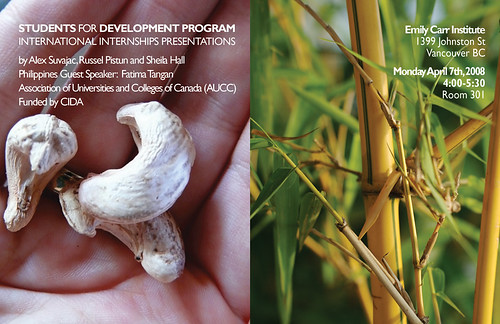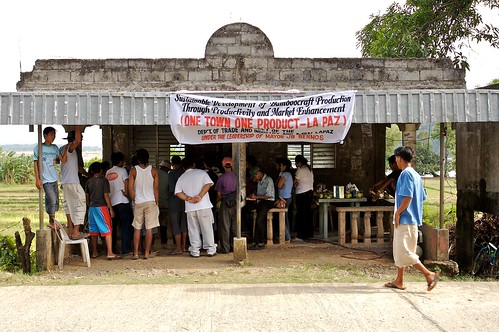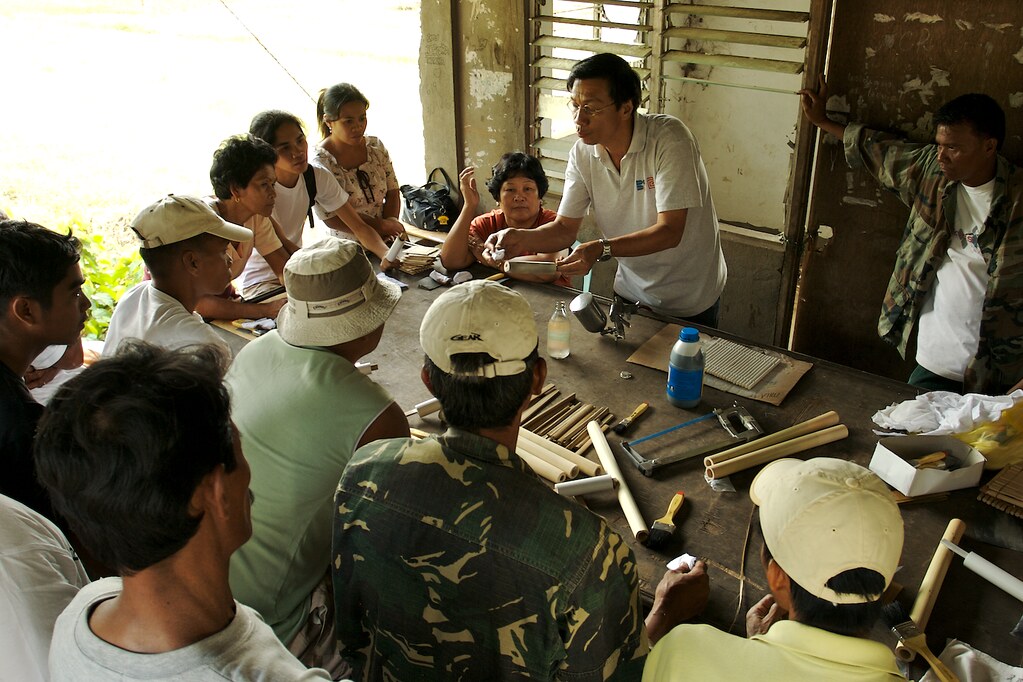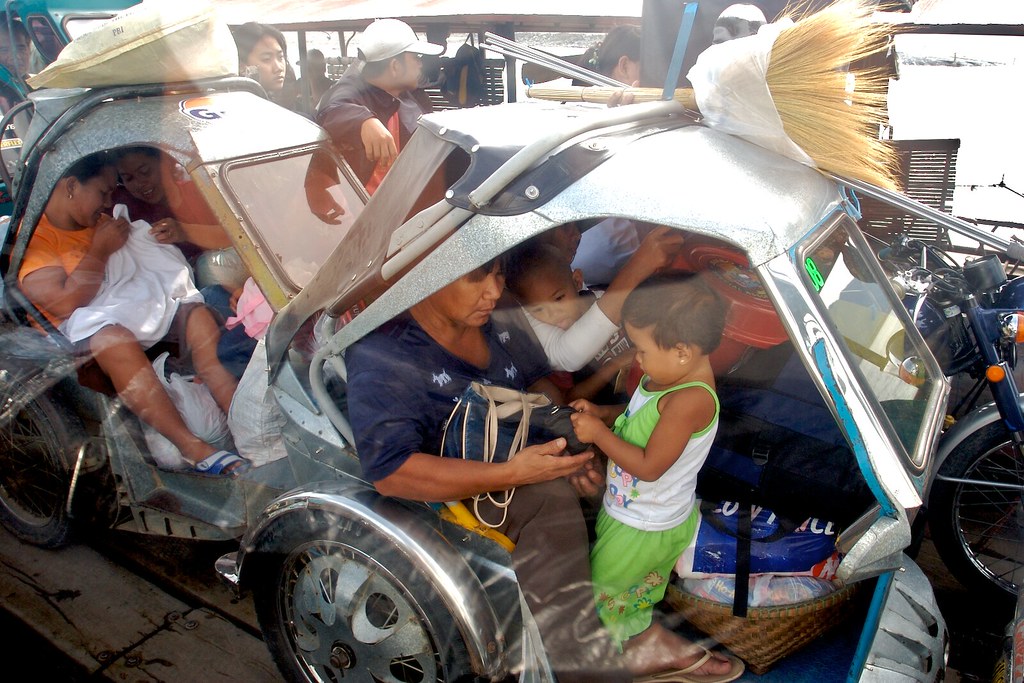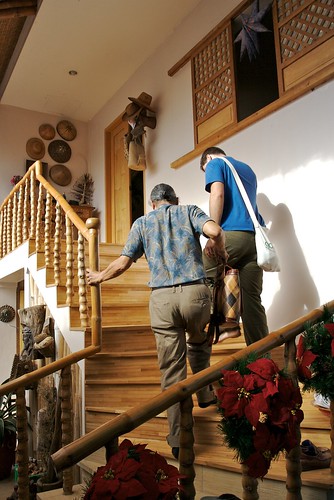Saturday, April 5, 2008
Sunday, January 27, 2008
Future of Sustainable Development
Many poverty issues are based around a poor livelihood living model in the countryside. Poverty is an issue equally as paramount as the degradation of our environment. By addressing poverty we can create educated societies that are built on the new advancements and principals of sustainable living - be it pragmatic ones. Elevating the knowledge and living conditions of people below the poverty line is a way of controlling population influx and environment degradation issues. I just think about all those people in developing countries who work toxic jobs for pennies. Industries targeting these regions are to me, some of the main global environmental problems. How can we move these people from these jobs to community based local economy systems?
The focus should be on how we can get more people living in an environmentally friendly living manor. All to often I see this push for people to flock to the mega cities where living conditions and job opportunities our toxic in many ways. This direction of progress is leading to an increase in population disease and illness.
I know we can create simple sustainable societies in developing nations by using some of the pragmatic eco-solutions utilized in living systems like Findhorn and even Arcosanti
Our continued work in this area of interest is leading us to develop a new basic housing system incorporating locally cultivated sustainable materials, and prefabrication philosophies with how Filipino’s design and build their own homes. This viable alternative to the hollow block and galvanized iron sheet building techniques is meant to be available to the masses and will provide new locally circulated economies based on renewable resources.
We see the developing world is an area of endless potential to create new models for efficient global living.
Please feel free to contact us for ways you or your company can contribute to this ongoing effort.
Relevant Worldchanging.com article on Sustainable Development
Posted by
A*SUVAJAC
at
8:06 AM
1 comments
![]()
Wednesday, November 28, 2007
Outside Looking In
Is how we felt when we got an opportunity to experience the homes of 4 families to examine their self built homes. This stage in our designing project let us get in touch with the target group for our housing project. The spaces these people live in are much different from what I am used to in Canada. There is no heating which can make it very cold in the winter given La Trinidad and Baguio are 4500ft above sea level. The addition of galvanized steel wall that are not insulated at all only amplify the outside temperature, cold or hot. Space is at a premium with most of these families opting for the largest lots they can afford to plan for the future. These lots are still smal by most standards because of the hillside location. Regardless the families must pinch every centavos to build some kind of shelter. If you think this house is small for one person you can only try to imagine what the 5 inhabitants feel like.
All of the four houses we visited had many things in common. Metal roofs, walls and a detached bathroom or comfort room as its referred to in the Philippines. The owners of this house have plans for the future construction. On day when they can save enough money they hope to take advantage of the concrete posts they installed to build a new hollow block home. Thought this structure may look temporary they are built in an affordable permanent way very common to the area. This house is actually better than most with these posts witch not act as a support and foundation to support and keep the house intact in severe wind weather. This home was also the only one to have a inset sink inside, the three others live as most do washing what they need outside in a large basin including themselves. No heat or hot water here.
Apparently the people in this area are no stranger to crime and attack even going as far as saying that they hope one day they can afford a concrete house because criminals often easily cut through the g.i. sheeting.
Posted by
A*SUVAJAC
at
6:09 PM
1 comments
![]()
Tuesday, November 27, 2007
Mother Nature's Still Upset - Baguio - Earthquake
Just now, while we were in the middle of our pre-lunch workout, Baguio and the surrounding area just got hit with an earthquake. It was minor enough to not cause any damage here that we know about, but strong enough to make this 4 story concrete building wobble like it was made out of rubber. We were stretching, sitting on the floor at the time so we could really feel it. No idea where the epicenter was but something tells me Typhoon Mina woke something up. OK, back to stretching I guess!?
Recent Baguio Earthquake History
Posted by
A*SUVAJAC
at
12:29 PM
0
comments
![]()
Away With Mina
It looks like Mina has made its way off of Luzon island, and further away from Baguio than was originally expected. It's unknown right now if it has weakened but we should know the complete story by later today. For now, its calmed down to a rainy, gray day.
Facts from Planet Ark:
Typhoon Mina swirlled out to sea on Monday after killing 8 people, destroying homes and flooding rice paddies in the Philippines. Mina, a category 1 typhoon with winds of 120 km per hour (74 mph) at its centre, lost strength as it made landfall late on Sunday and did not directly hit the central Bicol region, where nearly 300,000 people had been evacuated.
Disaster officials said Mina flooded wide areas in the northern and central Philippines, destroying more than 100 million pesos (US$2.3 million) worth of agricultural production, half of them ricefields in Isabela and Cagayan provinces.
Posted by
A*SUVAJAC
at
11:12 AM
0
comments
![]()
Thursday, November 15, 2007
Bamboo Lovers Dinner
We concluded our eventful and educational last day in Abra with a beautiful dinner at Mely's house. All of us were tired from the day but in great spirits. It felt amazing to be in the company of some of the greatest individuals I've ever met in my life: David, Mely, and our new bamboo friend, Dr. Raul, from India who is the president of INBAR and currently working out of Shanghai, China. They all have achieved so much, and at the same time have made a difference in their respective communities/countries. It was one inspiring day and I felt so fortunate.
Posted by
jsigharas
at
5:26 PM
0
comments
![]()
Abra Weaves
Despite the low with the workshop, our luck did not fail us. And our trip across the river was not completely wasted as we came across a gem of a spot when Mely took us deeper into the barrio. Only a 10 minute walk from where the workshop was being held, we met a community of weavers using bamboo as there raw material. They were using a native bamboo that had the perfect qualities for creating woven products. We observed beautiful bamboo baskets being woven right in front of our eyes by men and women. We learned that this is where Mely sourced most of her workers, and bamboo, to build her bamboo home. They even showed us their process of making their bamboo flooring - surprisingly basic! This experience showed us exactly how simple it is to work with bamboo. Bamboo allows the common man, women and even child to be involved and easily learn how to create a wide variety of bamboo products as a source of income and a means of livelihood.

But we were not the only observers. The children of the barrio were observing us, too. Again, the children never cease to amaze us with their lively, curious, picture-loving selves.
Posted by
jsigharas
at
4:47 PM
0
comments
![]()
Design Center Workshop
We were disappointed to say the least. We watched as the DCP workshop leader finish the bamboo in somewhat of a creative way, but with toxic paints and other finishes. The fumes alone drove us away from coming any closer. Hmmm...maybe someone should give the Design Center of the Philippines a little workshop on eco-friendly products and practices.
However, there is still light at the end of tunnel. This is where we come in: we saw this as the perfect situation/direction to step into and become pro-active about, and one that could be the most influential. We see that our outside perspective and knowledge of sustainable practices can benefit the market place a great deal. By influencing companies such as Boysen (the largest paint manufacturer, and most used brand in the Philippines) to evaluate their products' ecological and health affects, and invest in the research, production and marketing of an eco-friendly line of products, the road to sustainable growth and development will become much easier. See the blog below for an insightful look into this subject.
Posted by
jsigharas
at
4:02 PM
0
comments
![]()
Masking Eco-Friendlies
Our bamboo tour of the Philippines uncovered massive amounts of exceptional sustainable designs except most had one fatal flaw - caked on toxic coatings. If there was one key message we always tried to suggest it was that you don’t need that much coating on and you should try to use a non-toxic finish. It turns out eco-friendly finishes aren’t easy to come by here and it is unfortunately the one thing that stops these incredible designs from being some of the worlds best eco options. In case you haven’t heard there is a new trend in the world that is here to stay and that is the mainstream arrival of environmentally intelligent products. These products created from regenerative sources are beautiful in design, functional in application, and responsible in environmental impact. The Philippines is privileged to have an abundance of rapidly renewable raw material and skilled workers how know how to work wonders with it. Though this sector is under developed it has the potential to be a booming and regenerative agricultural industry. What is missing to push this industry into the competitive market and towards a completely environmentally friendly final product is the use of non-toxic adhesives and finishes. Toxic glues and finishing coats on products damage the environment, people who worked with them and the end user that lives with it. You may be unaware that much of the products that we furnish our homes and offices with are in fact poisoning our air. Thankfully industries are changing the way they make products. Largely in part to the surge in consumer acceptance of organic goods as well as concepts like cradle to cradle and design for disassembly; The world is experiencing a big wave of eco-conscious consumers that are making the conscious choice to search out product that are not harmful to air quality.
Posted by
A*SUVAJAC
at
3:50 PM
0
comments
![]()
Design Center Workshop
Going to Abra on a whim, and with no plans whatsoever, turned out in our favor. Our timing was just perfect and the Design Center of the Philippines was in town to hold a workshop on bamboo finishing techniques with a barangay . But first we had to get there. We took this ferry (or what acted like a ferry) across the Abra River just to the other side. Did sketchy come to mind? Yes, but it did its job, taking several tricyles, a jeepney and the SUV we were riding in.
Posted by
jsigharas
at
3:47 PM
0
comments
![]()
Wednesday, November 14, 2007
The Home of Mely
Mely has done a beautiful job with her home by using local bamboo and other indigenous made products to give it that ethnic Filipino feel and identity. One of the highlights of her home is the open-air living room which allows the wind to breeze through, to keep the home cool, and the sun to light its interior, to reduce the amount of electricity used.
Posted by
jsigharas
at
3:30 PM
1 comments
![]()
The Home Of Mely
So after much anticipation, we finally make it to Abra, which is about 5 hours north of Baguio, to visit our friend and bamboo trip coordinator, Mely Berselona. Mely's home has been on the list of things to see on our trip as much of it is composed out of bamboo. Bamboo floors, ceilings, rails, windows, furniture, doors, and decor. When we arrived in Bangued, the main town in Abra, it seemed like everybody has either heard of, or has seen it as it sticks out like a soar thumb amongst its neighboring homes which are all constructed out of the typical building material: concrete and steel.
Posted by
jsigharas
at
1:57 PM
0
comments
![]()
Tuesday, November 13, 2007
6 AM Bus - Baguio to Abra
We get a head start on our trip to Abra for fieldwork in search of bamboo homes. After a minor electrical fire half way down the mountain, sunrise illuminated the gorgeous valleys and made for a spectacular yet bumpy bus ride to Abra.
Posted by
jsigharas
at
11:17 PM
0
comments
![]()

